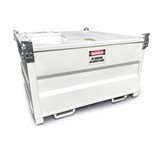The porous material, named NOTT-300, has the potential to reduce fossil fuel emissions through the cheaper and more efficient capture of polluting gases such as carbon dioxide (CO2) and sulphur dioxide (SO2).
The research, published in the scientific journal Nature Chemistry, demonstrates how the exciting properties of NOTT-300 could provide a greener alternative to existing solutions to adsorb CO2 which are expensive and use large amounts of energy.
The new material represents a major step towards addressing the challenges of developing a low carbon economy, which seeks to produce energy using low carbon sources and methods.
Potential applications
Professor Martin Schröder, Dean of the Faculty of Science at The University of Nottingham, led the research.
"Our novel material has potential for applications in carbon capture technologies to reduce CO2 emissions and therefore contribute to the reduction of greenhouse gases in the atmosphere," Prof Schröder said.
"It offers the opportunity for the development of an 'easy on/easy off' capture system that carries fewer economic and environmental penalties than existing technologies. It could also find application in gas separation processes where the removal of CO2 or acidic gases such as SO2 is required."
Carbon footprint reduction
The researchers understand the significance of their findings due to the importance of tackling greenhouse gases.
"It is widely accepted that it is imperative that the CO2 footprint of human activity is reduced in order to limit the negative effects of global climate change," Prof Schröder said.
"There are powerful drivers to develop efficient strategies to remove CO2 using alternative materials that simultaneously have high adsorption capacity, high selectivity for CO2 and high rates of regeneration at an economically viable cost."
And NOTT-300 delivers on each of these criteria. Because of this, the new discovery could signal a marked improvement in terms of environmental and chemical sustainability.
The material is economically viable to produce because it is synthesised from relatively simple and cheap organic materials with water as the only solvent.
High uptake of CO2 and SO2
"The material shows high uptake of CO2 and SO2. In the case of SO2, this is the highest reported for the class of materials to date," Prof Schröder said.
"It is also selective for these gases, with other gases — such as hydrogen, methane, nitrogen, oxygen — showing no or very little adsorption into the pores."
In addition to high uptake capacity and selectivity, it is also very easy to release the adsorbed gas molecules through simple reduction of pressure.
The material has high chemical stability to all common organic solvents and is stable in water and up to temperatures of 400°C.










-160x160-state_article-rel-cat.jpg)



